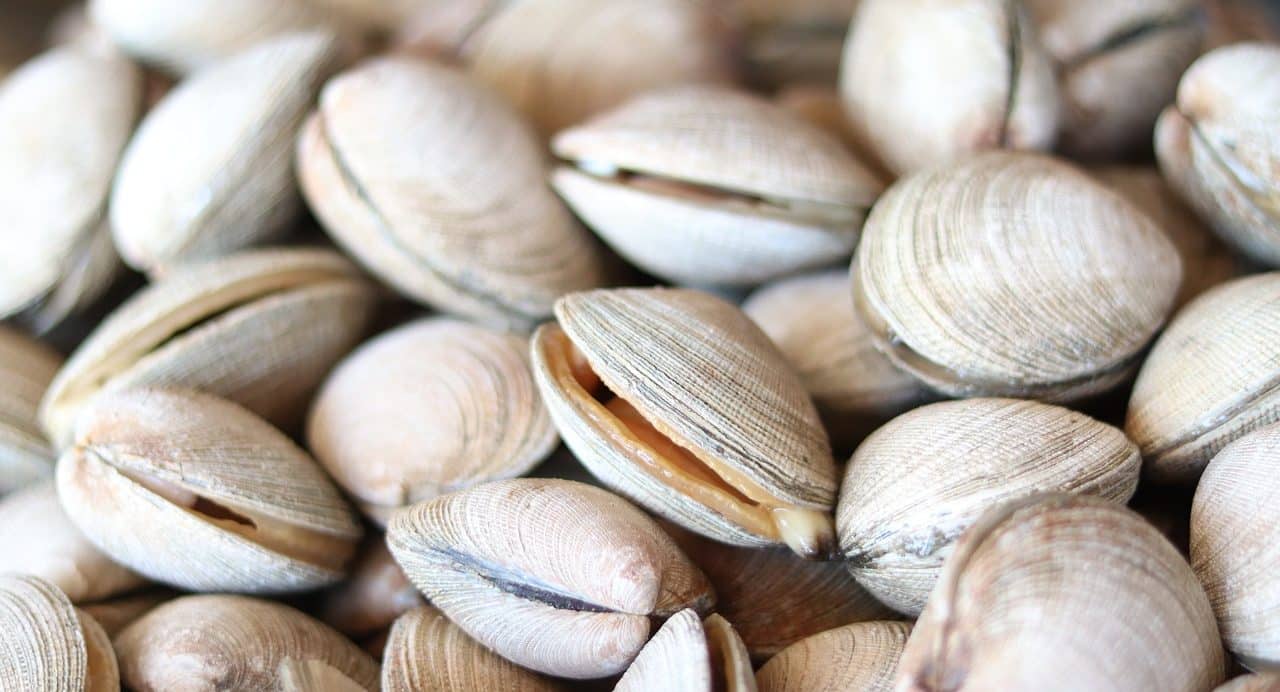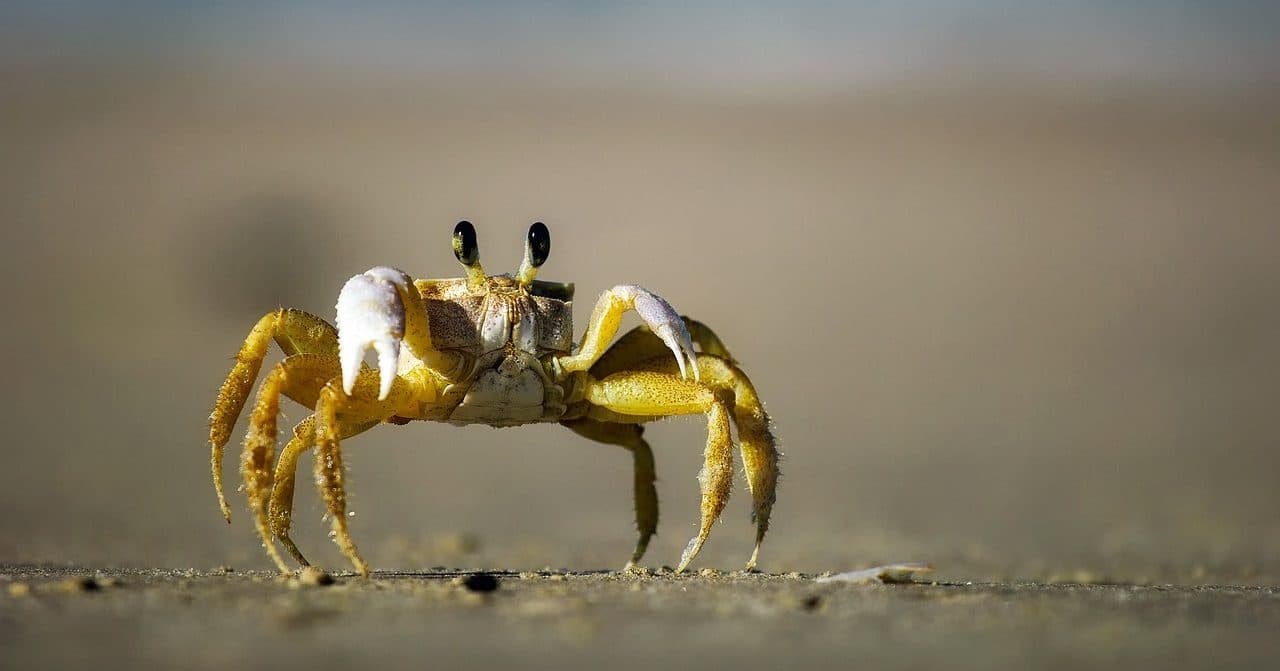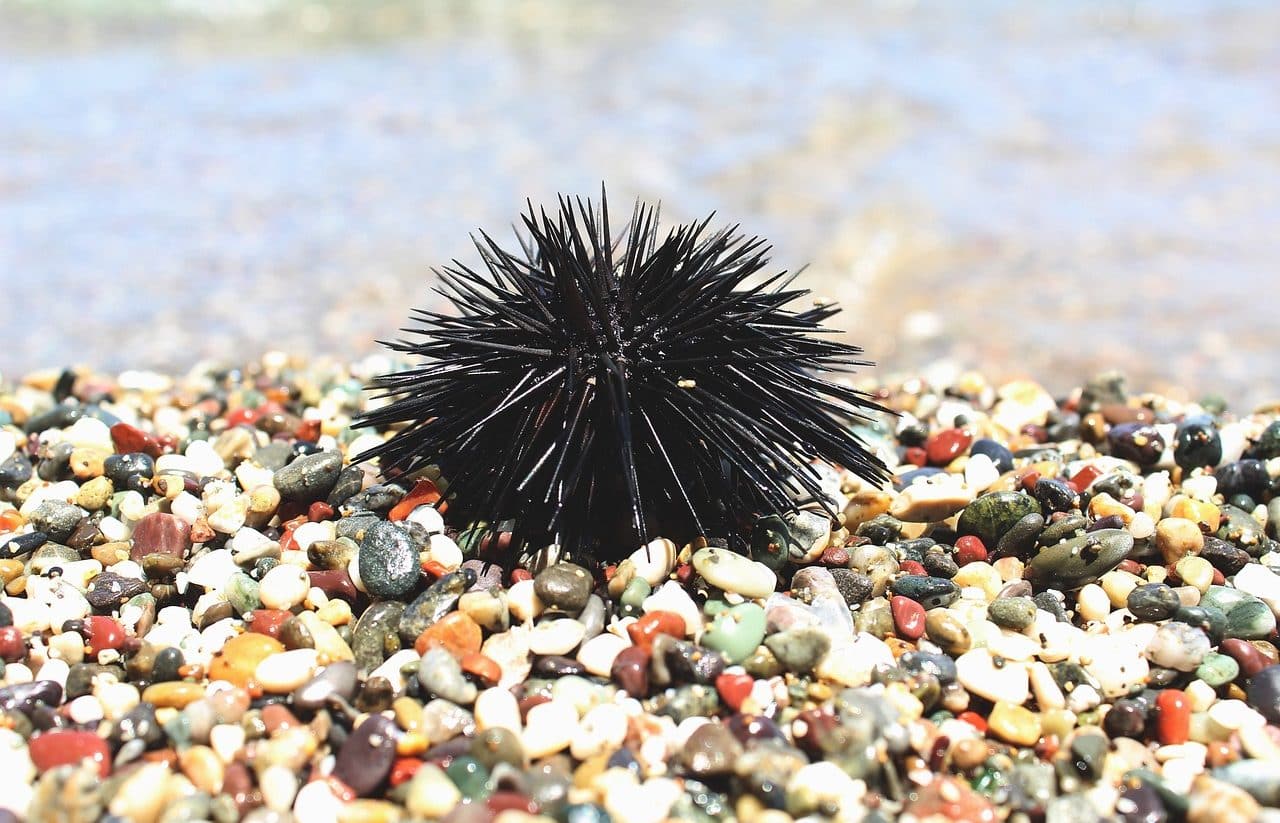
The clam is a bivalve mollusk: it has two shells joined by a hinge.
The term seafood refers to edible aquatic organisms that live in marine or brackish water environments, such as crustaceans (shrimp, crab, lobster, crayfish, crab, prawn), mollusks (clam, mussel, oyster, squid, sea snail , oyster, razor clams) and some types of echinoderms (such as the sea urchin). Seafood is an important part of many diets around the world and is consumed both raw and cooked in a variety of dishes and culinary preparations.
Mollusks
Bivalve mollusks
Bivalve mollusks are a class that is characterized by having two valves or shells that are joined together by a hinge. Some common examples of bivalve mollusks are clams, cockles, mussels, oysters, scallops, and scallops. These organisms usually live on the seabed, where they feed by filtering food particles from the water. They are important both ecologically and economically, as they play a crucial role in water filtration and are a food source for humans and other species.
Cephalopod mollusks
Cephalopod mollusks are a marine class that includes octopus , squid , squid, cuttlefish , and nautilus. They are characterized by having tentacles on the head and an internal shell or being devoid of it. They are known for their intelligence and camouflage skills, as well as their highly developed defense and hunting systems. They are active predators that hunt a variety of prey in the ocean and play an important role in marine food chains.
gastropod mollusks
Gastropod mollusks are a class that includes snails , slugs, nudibranchs, clams, and limpets. They are characterized by having a single spiral shell or no shell at all. They are very diverse in habitats and behaviors, and can be found in marine, freshwater and terrestrial environments. Many of them are herbivores, carnivores or detritivores, playing a variety of roles in their ecosystems.
univalve mollusks
Univalve mollusks are a subclass of gastropod mollusks that are characterized by having a single spiral shell. This protects its body and can vary in shape, size and color depending on the species. Some examples of univalve mollusks include the land snail and some aquatic species such as the sea snail. These organisms can have a wide range of habitats.

Among the many arthropods that make up the group of crustaceans, the crab stands out.
Crustaceans
Crustaceans are a large group of arthropods that are found mainly in aquatic environments, although there are also terrestrial species. It includes a wide variety of animals, from small shrimp to large crabs and lobsters. Some common examples of crustaceans include shrimp, lobster, crab, crayfish, prawn, lobster, barnacles, crab, crab, and hermit crab.
Distinctive features of crustaceans include their chitinous exoskeleton , which provides support and protection, and their segmented body . Many possess specialized appendages , such as pincers for prey capture or defense, as well as antennae for food detection and the sense of touch.
Crustaceans are found in a variety of aquatic habitats, from oceans to freshwaters, and play a variety of ecological roles . Many species are important as part of food chains, serving as prey for fish and other animals, while others are active predators that hunt smaller prey.
In addition to their ecological importance, crustaceans also have great economic value for humans. They are an important source of food in many cultures, and commercial species such as shrimp and lobster are widely caught for human consumption . They are also used in aquaculture and the fishing industry.
echinoderms
Echinoderms are a phylum of marine animals that includes various species, including some considered shellfish, such as the sea urchin . Although echinoderms are not crustaceans or mollusks , they are included in the category of shellfish due to their presence and value in marine gastronomy.
Sea urchins are echinoderms belonging to the order Echinoidea . They are characterized by their spherical or discoidal body covered by mobile spines, which they use to move and protect themselves. These animals inhabit seabeds around the world, from shallow waters to great depths.
In terms of diet, sea urchins are generally herbivorous , feeding on algae and other plant materials present on the seabed. However, some species can also be omnivorous or carnivorous, consuming small invertebrates and organic detritus.
In gastronomy, sea urchins are considered delicacies in many culinary cultures, especially in Asian and Mediterranean cuisine. They are valued for their flavorful and delicate meat, which is consumed raw or cooked in a variety of dishes, such as sushi , sashimi, ceviches, and salads . In addition to their distinctive flavor, sea urchins are also considered a nutritious source of protein, omega-3 fatty acids, vitamins and minerals.
Although sea urchins are prized for their culinary use, excessive capture and consumption can have a negative impact on marine ecosystems. Therefore, it is important to sustainably manage fisheries to ensure the conservation of their populations and the health of the sea.

Excessive hunting of sea urchins negatively impacts marine ecosystems.
Sustainable fishing
Sustainable seafood fishing is crucial to ensuring the health of marine ecosystems and maintaining the long-term availability of fishery resources. Fishermen typically depart from docks, important access points for fishing vessels that provide the infrastructure to load and unload catches, as well as carry out vessel maintenance and preparation activities.
Fishermen often plan their fishing trips based on the tides . High tide ( high tide ) and low tide ( low tide ) can influence the activity of fish and other marine organisms, as well as navigation conditions. During low tide, some shellfish species may be more accessible to catch.
In shellfish fishing, different types of fishing nets and traps are used. Trawls and gillnets are common for capturing crustaceans and fish, while traps, such as pots and baskets, are used to selectively capture crabs and lobsters.
Many shellfish species have specific fishing seasons when they are allowed to be caught to ensure the sustainability of populations. These can be based on natural cycles of reproduction and growth, as well as fishing regulations designed to prevent overexploitation.
Shellfish fishing can be carried out in a variety of coastal and marine environments , including shallow waters near shore and deeper waters offshore. The management of these marine areas is essential to protect sensitive habitats and promote the recovery of shellfish populations.
Marine sustainability involves the responsible management of fishing resources and the conservation of ecosystems. This includes adopting science-based management measures, collaborating between fishermen, scientists and resource managers, and promoting fishing practices that minimize impact on the environment and maintain shellfish populations within safe biological limits.
